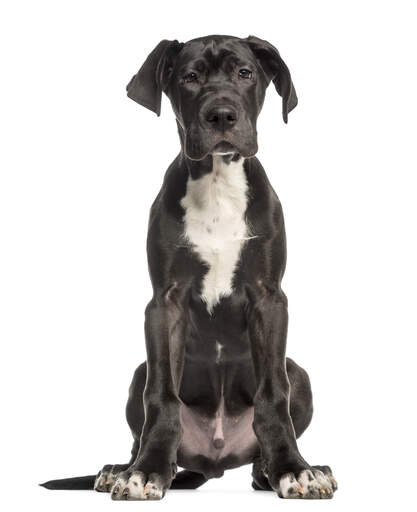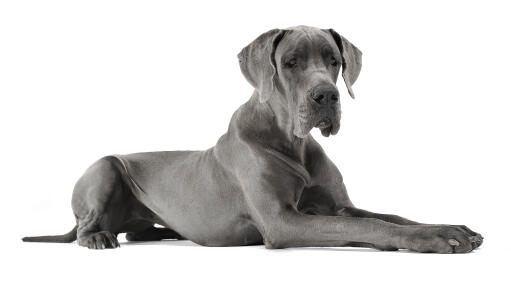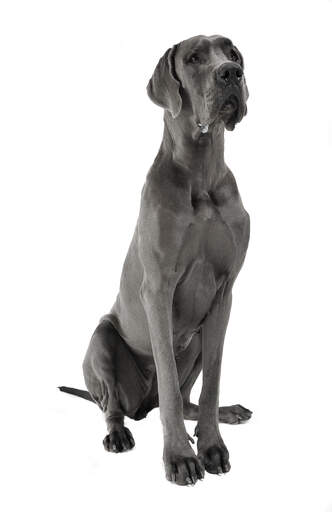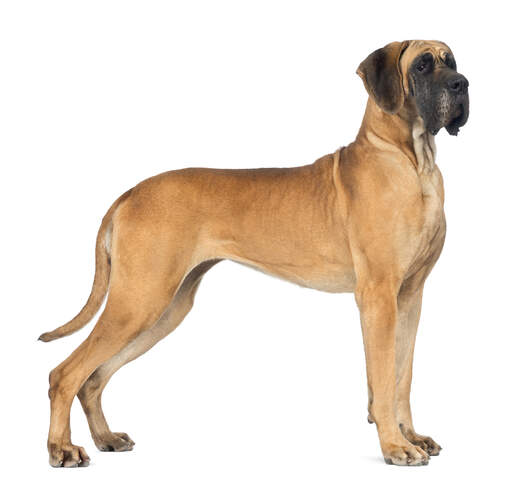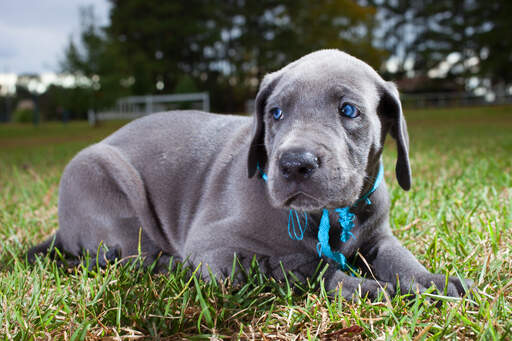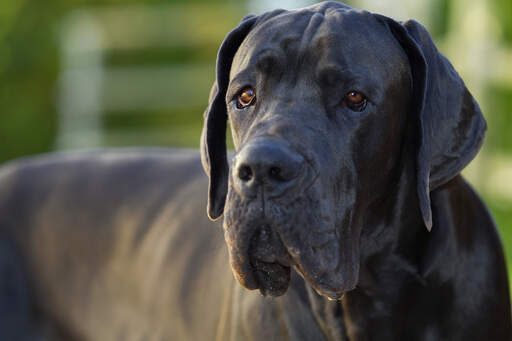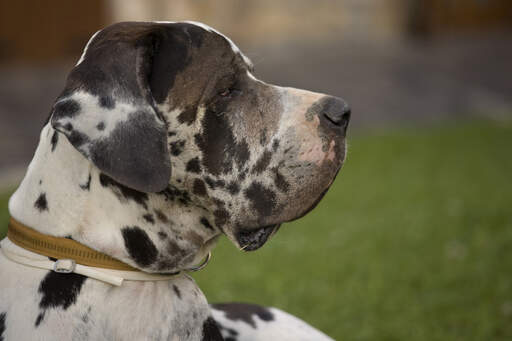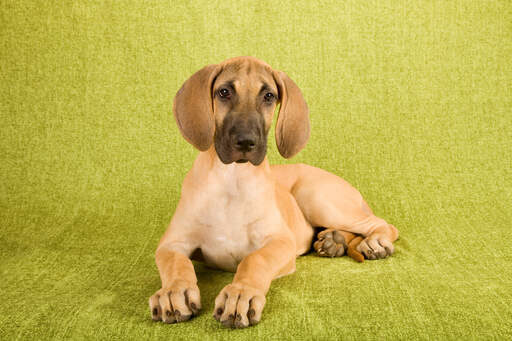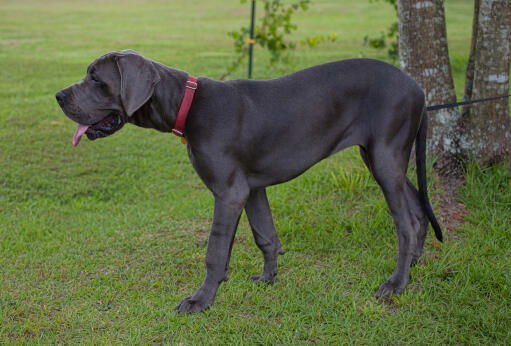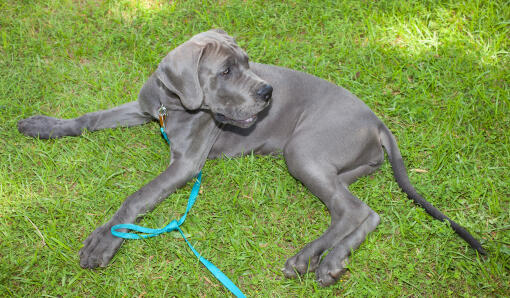Great Dane Dogs










Breed Rating (1 Reviews)
| Appearance | |
| Friendliness | |
| Hardiness | |
| Garden |
History
Despite the name, these dogs have their origins in Germany, not Denmark. The exact reason why they are now called Great Dane is unknown. They were originally used in Wild Boar hunting. This powerful and permanently hungry breed was able to chase and tackle down aggressive boar. This made them very popular for hunting. The British called them “German Boarhounds”, and even today in Germany they are still called either the “Deutsche Dogge” or the “German Mastiff”. That reputation for hunger gave rise to that famous cartoon dog - Scooby Doo!
Behaviour
They are one of the tallest breeds of dog out there, in fact the largest dog on earth (as of 2014) is a Great Dane named Zeus, with a whopping 3ft 10in at shoulder height. Despite their size they are big softies at heart. They are a friendly and dependable breeds who love human contact. They often forget just quite how big they are and may try to snuggle up next to you. They are often referred to as gentle giants, they fit well into family life and are gentle, loving dogs. They are good with children but, again, they can forget their size and accidentally knock them over or overwhelm the child. Their height gives them access to most kitchen worktops and tables, so keeping all your food hidden away in cupboards is a must. They respond well to training and can often be seen at various dog competitions. They are peaceful and content within a home, making them a great addition to the household, as long as the household is big that is, otherwise you’ll find yourself rather cramped.
Despite being such large dogs, the Great Dane only needs a moderate amount of exercise. Their massive size causes them to have a slower metabolism which in turn means they have less energy. A leisurely, normal to long walk each day will satisfy their needs. Just make sure to keep an eye on them as their big size means they have a lot of strength behind them. Young Great Danes should have a limited amount of walks per week in order to prevent bone and joint problems. They can also suffer, so make sure you are familiar with the signs of this so you can report to a vet right away. Great Danes have very short fur and only require occasional grooming.
Temperament
These dogs are a gentle and loving type. They are a prime example of the term “Gentle Giant”, as they are easy going and will normally get on fine with other dogs and pets. Their big size means that they can sometimes be a hit clumsy. They have a tendency to forget their own strength and size, so be sure to keep an eye on things if they are playing with kids or smaller animals.
They’ll want to be the center of your family. You’ll have a hard time stopping them from lumbering up onto the couch and curling up next to you. They are devoted to their families and can make great guard dogs if trained correctly.
Health Problems
Great Danes can be prone to canine hip dysplasia (CHD), elbow dysplasia, bloat, heart problems and bone cancer.
Breed Details
- Status: Common
- Life Expectancy: 6 - 8 years
- Weight: 99 - 200 pounds
- Height: Most are over 32"
- Rare: No
- Coat: Short
- Grooming Requirements: Once a week
- Town or Country: Either
- Minimum Home Size: Large House
- Minimum Garden Size: Large Garden
- Breed Type: Guard Dog
- Size: Giant
- Energy Level: Medium
- Exercise Required: Over 2 hours
Great Dane Pictures
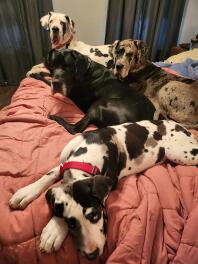
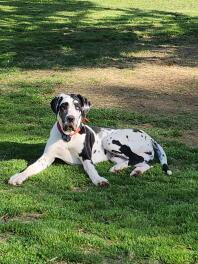
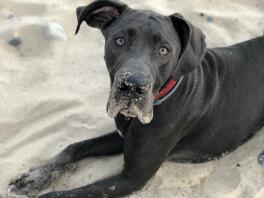
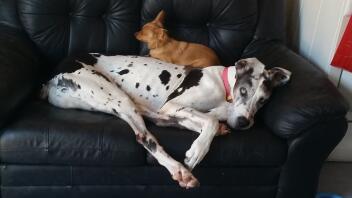
Latest Reviews For Great Dane (1 of 1)
- Yvonne,
We have a female Great Dane who is now 7 years old. She is called Delilah she is fantastic very clever, intelligent, obedient but very nosey (but she is just like all females). Delilah loves to travel with us in the car & is no bother at all, if fact one could forget she is with us The best breed we have had & we have a lot of dogs throughout our 50 years of married life. Only down side is the breeds life expectancy.

